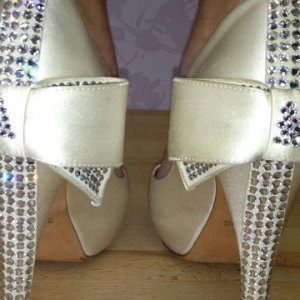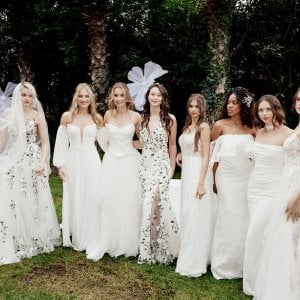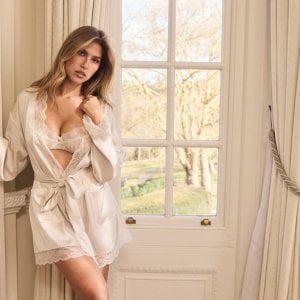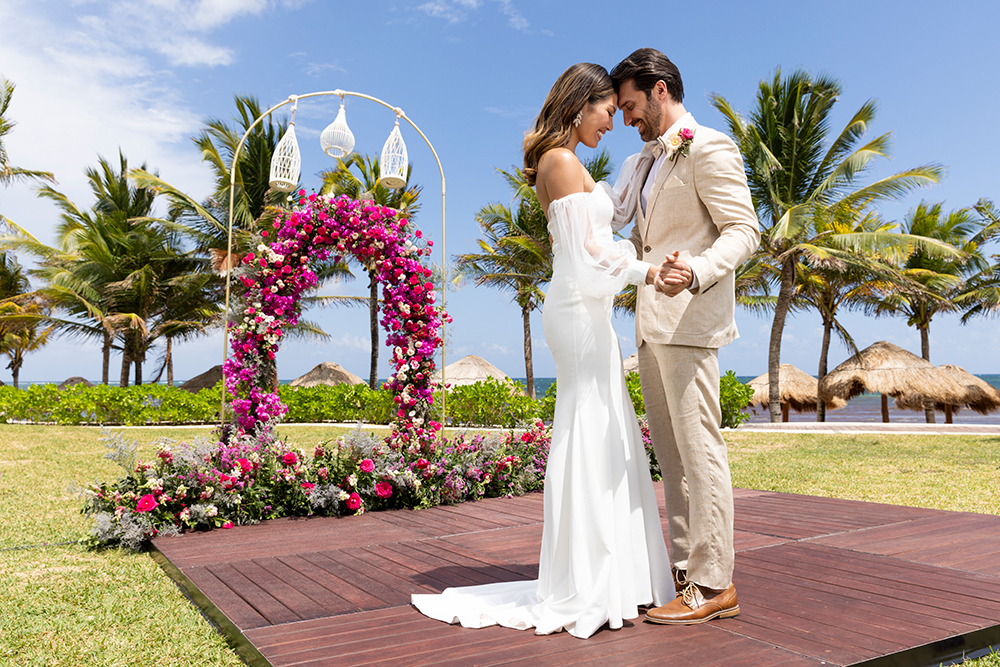I used to think that custom-designed jewelry was reserved for mega-watt stars or couples with really wacky taste (check out this Star Wars-inspired ring!). But when I went shopping for a wedding band with Jason, my fiancé, and we were unable to find anything that would fit next to my thin pavé engagement ring, my family jeweler, Raineri Jewelers, offered to create a new, thicker setting that would incorporate the center diamond and side stones I already had. The only alternatives were to wear multiple thin bands for a stacked effect — which to me, felt more like something I'd do with anniversary jewelry, not my everyday ring — or wear my wedding ring on a different hand than my e-ring.
I was fine with option #2, but my fiancé insisted on getting the thicker setting as an anniversary gift to celebrate eight years of dating, which was a sweet surprise. I'm over-the-moon about it, along with the wedding ring I selected to match.
Note: The rings actually do fit closely together; I just pushed them apart for this photo so that you can get a better look at both of them. BG brides, do any of you wear your wedding ring around the house when no one is looking? Guilty as charged...
Thinking of custom-designing an engagement ring or wedding band? Here's what we learned from our experience:
1. Choose a reputable jeweler.
I can't stress this enough! Ask friends, family members, or other brides whose style you admire for personal recommendations. If you're buying a diamond, it must come with a GIA (Gemological Institute of America, Inc.) report or some other appraisal by a certified jewelry institution. If you already own the diamond, like I did, then the jeweler should be able to reset it in an hour or so while you wait in the store.
2. Start early.
It took about a month of back-and-forth before I was able to walk out of the store with the new setting (that includes one revision to the original design). Here's how the process worked: We consulted with the owner, Roy; he created a sketch based on my preferences and existing diamond; then, he made a raw mold of the ring so that I could review it before he put the finishing touches on it. The mold isn't polished and it doesn't contain diamond side stones, so you'll have to use your imagination to envision what the final product will look like once everything is in place and it's been shined to perfection.
Find a jeweler who is happy to work with you until you're 100% satisfied with the design. Roy was very patient with me when I asked for a revision and the final product was more beautiful than anything I could have ever anticipated.
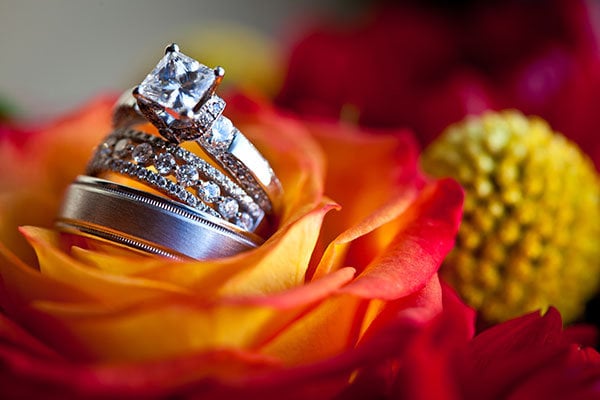
Photo Credit: Jess Dewes Photography
3. What to look for in a diamond...
Buying a diamond? I asked the pros at Raineri which of the 4 C's (cut, clarity, color and carat weight) is most important, and it really depends on budget, first and foremost, and personal taste second. However, I was surprised to learn that the sparkle and brilliance of a diamond depends more on its cut than anything else. People often think of cut as shape (e.g. round, cushion, etc.) but it actually refers to the diamond's proportions, symmetry and polish, so this might be one thing worth splurging on.
One way to save is to choose a diamond with a carat weight that's slightly smaller than the "magic sizes": one carat, one-and-a-half carats, two carats, etc. It's nearly impossible for the average consumer to tell the difference between two diamonds that are very close in size. For example, a 1.01-carat diamond may cost as much as 20 percent more than a .98-carat diamond, even though they look practically the same to the naked eye.
4. Try on different ring settings — don't go into it blind.
Roy asked us some very specific questions, including what width the ring should be (to the millimeter) and whether I liked halos with sharp lines or more rounded corners. (Browse our slideshow of 70+ Beautiful Engagement Ring-Wedding Band Combos for inspiration!) This might be obvious, but it's worth mentioning that you can show your jeweler photos of rings that you like, but they can't replicate existing styles from other brands — it must be a completely original design.
Grooms, if you prefer to surprise your bride-to-be by picking out the ring on your own, look in her closet to get a feel for her everyday jewelry. Does she own mostly white gold or warmer tones? Do her pieces tend to be more simple or ornate? Consider her lifestyle as well — if she has a job that's very hands-on or she's the outdoorsy type, then a setting with a lower profile might be a more practical choice than one with a higher stone. When grooms really aren't 100% sure, Raineri recommends proposing with a classic solitaire band, which the bride can always switch out later on.
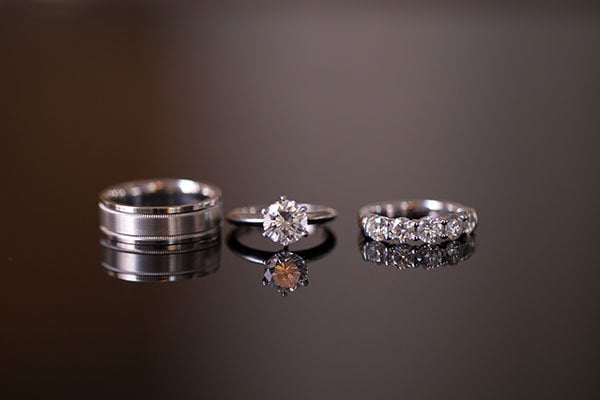
Photo Credit: Coshi Productions
5. It can be easier (and cheaper) to purchase the engagement ring and wedding band from the same place.
Going to the same jeweler for both rings is helpful because the store reps become familiar with your sense of style, and may be able to better assist you. With all of the other wedding-planning appointments we brides have, who really wants to go through the store search process all over again? Also, from my experience, jewelers may be more willing to work with you on pricing if you make repeat purchases. There's this misconception that custom-designed jewelry costs a fortune; of course, it varies depending on the labor and ornamentation involved, but it can even be more affordable sometimes.
If you're buying your e-ring online, it might be helpful to ask how the wedding band shopping policy works in advance. For example, my friend's husband bought her e-ring online, and the company required that she mail it back to them in order to purchase a wedding band, but she declined because she was too nervous!
Custom jewelry is a great option for brides who want a one-of-a-kind piece or want to incorporate stones that were passed down to them by family members. Now it's your turn: Show us pics of your rings via Facebook or Instagram them to us and include our user name (@bridalguide)!
—Stefania Sainato

